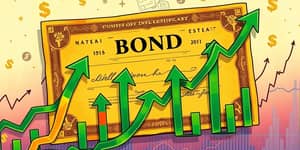
As ESG investing faces unprecedented regulation and market pressures, asset managers and investors must evolve to thrive. This article explores the challenges and emerging strategies defining the sustainable finance landscape in 2025.
By March 2025, global ESG fund assets exceed USD 3.16 trillion, underscoring the scale of sustainable finance worldwide. Yet, the sector experienced a record net outflow of USD 8.6 billion in Q1, the largest quarterly withdrawal since tracking began. European redemption activity drove this downturn, while US assets—valued at roughly USD 353 billion—relied more on market appreciation than new capital.
Longer-term performance remains competitive: a USD 100 investment in a sustainable fund from December 2018 would have grown to USD 136 by early 2025, compared to USD 131 for traditional portfolios. However, clean energy underperformance has dampened investor appetite and geopolitical uncertainty has tested conviction.
European investors are reassessing ESG allocations amid shifting political landscapes and policy reversals, including a US administration less focused on climate commitments. Legal ambiguities surrounding US Diversity, Equity, and Inclusion (DEI) directives further fuel caution among managers promoting global ESG strategies.
As a result, up to half of EU ESG funds may rename or repurpose their offerings by mid-2025, with many evolving into “transition” vehicles that actively support corporate decarbonization.
In Europe, the European Securities and Markets Authority (ESMA) enforces rigorous guidelines: funds using ESG terminology must dedicate at least 80% of assets to genuine environmental or social goals, and exposure to controversial industries like fossil fuels or arms is prohibited. These measures aim to stamp out greenwashing and enhance accountability.
Meanwhile in the US, proposed SEC rules require granular disclosures in prospectuses and annual reports. Funds labeled as sustainable will need to detail strategies, performance metrics, greenhouse gas emissions data, and adopt standardized tabular formats for easier comparison.
This regulatory divergence highlights the growing complexity for cross-border fund managers and underscores the need for robust governance frameworks to maintain investor confidence.
In response to tightening standards, firms are pivoting from simple exclusion-based models toward transition-focused portfolios that drive measurable change. This involves engaging companies to adopt tangible environmental and social improvements rather than merely divesting legacy assets.
Key trends shaping the new ESG frontier include:
By aligning capital with companies’ decarbonization roadmaps, investors can foster real-world impact while pursuing competitive returns.
With greenwashing concerns at an all-time high, fund managers must embrace third-party certifications and independent verifications. Transparent reporting and credible labeling foster investor confidence and mitigate reputational risk.
Practical steps include:
Such measures not only satisfy regulatory demands but also strengthen long-term investor relationships.
To navigate this evolving landscape, consider the following roadmap:
By systematically applying these steps, funds can realign portfolios, comply with evolving rules, and capture emerging opportunities in sustainable markets.
With over USD 6 trillion required annually for a successful energy transition through 2030, the stakes for sustainable finance have never been higher. While 2025 serves as a critical test year for EU regulations, shifting US policy dynamics may further polarize global standards.
Nevertheless, the underlying momentum toward sustainability remains resilient. Investors equipped with clear strategies and robust disclosures will be best positioned to drive impact and secure long-term returns in a world increasingly shaped by environmental and social imperatives.
Ultimately, thriving amid stricter disclosures demands adaptability, transparency, and a genuine commitment to measurable change. By embracing these principles, the ESG ecosystem can evolve from a marketing label into a powerful engine for positive global transformation.
References













